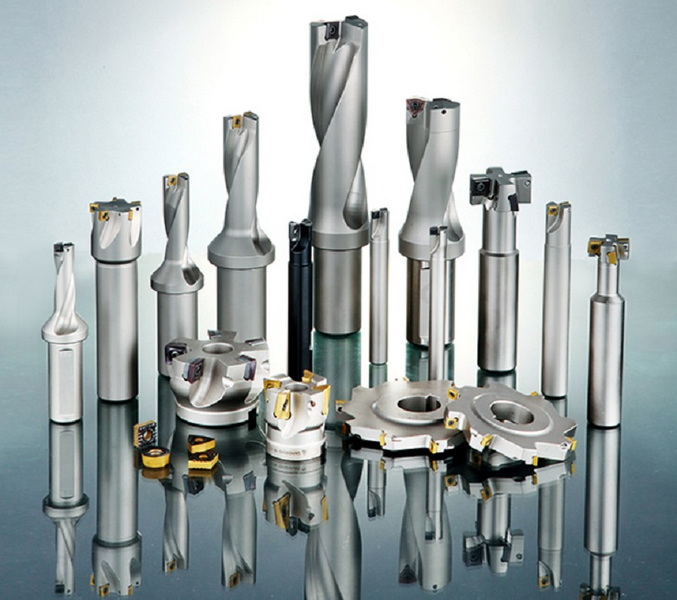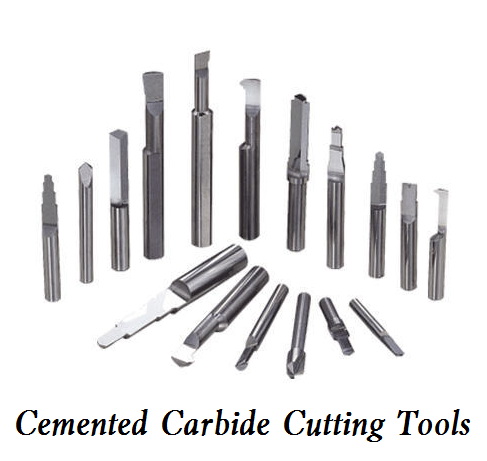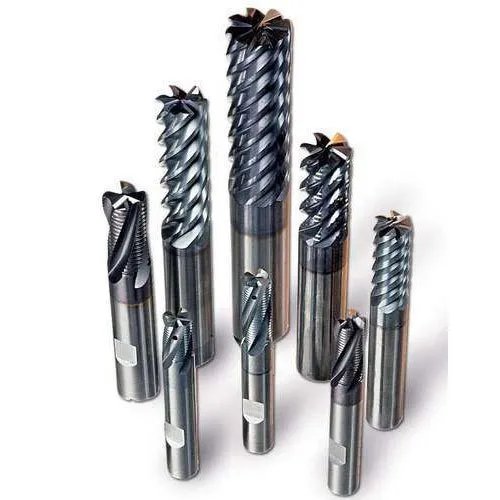Content Menu
● Composition and Properties
● Manufacturing Process
● Applications of Tungsten Carbide
● Advantages of Tungsten Carbide
● Limitations of Tungsten Carbide
● Conclusion
● FAQ About Tungsten Carbide
>> 1. What makes tungsten carbide so dense?
>> 2. How does the density of tungsten carbide compare to steel?
>> 3. What factors affect the density of cemented tungsten carbide?
>> 4. In which industries is the density of tungsten carbide most beneficial?
>> 5. Can the density of tungsten carbide be modified for specific applications?
● Citations:
Tungsten carbide is a chemical compound comprising equal parts of tungsten and carbon atoms[4][9]. In its most basic form, tungsten carbide is a fine gray powder, but it can be pressed and formed into shapes through a process called sintering for use in industrial machinery, cutting tools, abrasives, armor-piercing shells, and jewelry[4]. It is an exceptionally hard and dense material with a wide range of applications due to its unique properties[11][5].

Composition and Properties
Tungsten carbide (WC) is a ceramic material, more specifically a cemented carbide, where tungsten carbide grains are bonded together by a metallic binder, typically cobalt[1]. The properties of a particular "grade" of carbide are determined by its composition, the size distribution of the tungsten carbide grains after sintering, the binder metal type and content, the quality of the raw materials used, and the workmanship with which the material is made[1].
Density:
Density, or specific gravity, is the weight per unit volume of a cemented carbide, measured in grams per cubic centimeter (g/cm3)[1]. It is essentially the weighted average of the densities of all of the components contained in the product[1]. For grades containing only tungsten carbide and a binder metal, the density of the composite decreases as the lighter binder metal content increases[1]. The density of tungsten carbide is approximately 14.6 g/cm3, which is greater than lead (11.3 g/cm3)[5]. Tungsten carbide has a density of 14,500 kg/m3, double the density of steel[7].
Hardness:
Hardness is the resistance of a cemented carbide to penetration by a diamond indenter under a specific load[1]. It is measured on the Rockwell A (Ra) scale in the US and on the Vickers (HV10 or HV30) scale in Europe and elsewhere[1]. Hardness is primarily a function of composition and grain size, with higher binder metal contents and coarser tungsten carbide[1]. Conversely, low binder contents and fine grain sizes produce high hardness values[1]. Hardness is directly related to abrasive wear resistance[1]. Tungsten carbide has a Mohs' hardness of 9-9.5, second only to diamonds[7]. Tungsten carbide is exceptionally hard, having a Mohs hardness of 9 to 9.5 and a Vickers number of roughly 2600[10].
Transverse Rupture Strength (TRS):
TRS is a measure of the tensile strength of a cemented carbide in a three-point bending test[1]. It is reported in units of pounds or thousands of pounds per square inch or in Newtons per square millimeter (N/mm2)[1]. TRS is perhaps the best measure of the relative utility of individual production batches since it surveys a reasonable volume[1]. Products having relatively high TRS values are generally applied where shock, impact, or failure by breakage are factors[1].
Residual Porosity:
Residual porosity is determined by visually examining the polished surface of a sintered sample at 100X or 200X magnification[1]. Ratings for "A" type porosity (pores less than 10 microns in diameter), "B" type porosity (pores larger than 10 microns in diameter), and "C" type porosity (carbon inclusions) are determined by comparing the size and frequencies of each pore type[1]. Each standard photograph is associated with a numerical rating that is used to represent the porosity levels in the sample[1]. In general, edge strength and toughness decrease as the level of residual porosity increases[1]. At high levels of porosity, the wear resistance of the product may also be adversely affected[1].
Magnetic Saturation:
Magnetic saturation is the degree to which the metal binder in a cemented carbide is saturated with carbon[1]. It is most useful for materials having a cobalt binder[1]. For a known cobalt content, magnetic saturation values indicate how much carbon the cemented carbide contains[1]. Magnetic saturation is sometimes used as an indicator of relative strength among lots of a specific grade[1].
Coercive Force:
Coercive force is the strength of the magnetic field required to demagnetize a fully magnetized cemented carbide sample[1]. Coercive force is typically measured in oersteds[1]. The coercive force measurement depends on many factors including composition, sintered grain size distribution, and residual porosity levels[1].
Other Properties:
Tungsten carbide has a high melting temperature of 2870°C (5200°F) and a higher boiling temperature of 6000°C (10830°F)[10]. Tungsten carbide is approximately twice as stiff (high modulus of elasticity) as steel[4]. Tungsten carbide has very high impact resistance and it has very high strength for a material so hard and rigid[4]. Compressive strength is higher than virtually all melted and cast or forged metals and alloys[4]. With temperature increase to 1400°F, tungsten carbide retains much of its room temperature hardness[4].
Manufacturing Process
Tungsten carbide is made by heating tungsten metal and carbon to 1400°C – 2000°C[10]. A lower-temperature fluid bed procedure that combines tungsten metal or blue WO 3[10]. Pure tungsten carbide is far too brittle to be used on its own: it must be combined with another metal[5]. A high-temperature sintering process is used to chemically combine tungsten carbide with small, precisely controlled quantities of nickel to form an advanced metal matrix composite[5]. It can be pressed and formed into shapes through a process called sintering for use in industrial machinery, cutting tools, abrasives, armor-piercing shells and jewellery[4].
Applications of Tungsten Carbide
Tungsten carbide's unique properties and exceptional qualities make it a sought-after material for many different applications[11]. Its high tolerance for heat and pressure has led to its use in critical functionality machineries over the years, and it is slowly finding its way into normal day lives[9]. The application of Tungsten Carbide is varied and there is a singular theme of sturdiness running through all the industries[9]. The use of Tungsten Carbide is associated with the need to see the longevity of a given application[9].
Cutting Tools:
Tungsten carbide is often used in the manufacture of cutting tools such as drills, milling cutters, taps, cutting wheels, and saw blades[13]. Carbide gives these tools high hardness and wear resistance, allowing them to cut difficult-to-machine materials such as steel, titanium, and tungsten carbide[13]. It is widely used for high-speed cutting turning tools[6].
Wear-Resistant Parts:
Tungsten carbide is also used to make parts that are subjected to high stresses, such as those found in the oil and gas, mining, and pulp and paper industries[13]. Carbide gives these parts high wear resistance, corrosion resistance, and long life[13].
Aerospace and Aviation: The aerospace and aviation industries use tungsten carbide coatings to protect critical engine components from wear[2]. These coatings are applied to turbine blades, compressor seals, and landing gear components where reliability is paramount[2]. The material's ability to maintain its strength and integrity under severe stress and erosive conditions makes it ideal for protecting hardware against erosion, abrasion, and impact damage[2]. It can also be used as aerospace materials[6].
Oil and Gas Production:
The oil and gas industry uses tungsten carbide coatings to protect drilling equipment and production components[2]. These coatings extend the life of drill bits, valve stems, and pump components operating in abrasive, high-pressure environments[2]. The material's exceptional wear resistance and corrosion protection capabilities help maintain equipment integrity in deep-well drilling operations where replacement costs are extremely high[2].
Manufacturing and Industrial Processing:
Manufacturing operations benefit from tungsten carbide-coated tools and wear components in metal forming and processing applications[2]. The material is especially valuable in cutting tools, where its exceptional hardness and wear resistance significantly extend service life in high-speed machining operations[2]. Advanced tungsten carbide powder formulations ensure consistent coating quality across large production runs[2]. At the same time, industrial processing equipment, such as mixers, extruders, and material handling components, utilizes tungsten carbide coatings to resist abrasive wear and maintain precise tolerances[2]. Tungsten carbide's superior performance in manufacturing applications directly translates to reduced downtime and improved operational efficiency[2].
Power Generation:
Power generation facilities employ tungsten carbide coatings to protect critical components in conventional and renewable energy systems[2]. These coatings shield turbine components from erosion caused by steam, particulates, and high-temperature gases[2]. The material's wear resistance helps maintain efficient operation in steam and gas turbine applications[2].
Construction:
Tungsten carbide is commonly used in construction materials such as saws and drill bits because it is almost unbreakable[11]. Construction requires the use of tools with high strength and toughness so that they can withstand being used on the materials that make up most structures[11]. Materials like cement and asphalt are challenging to penetrate, requiring an especially durable and strong blade or drill bit, like those made of tungsten carbide[11].
Other Applications:
- Injection molding tools[13]
- Kiln furnace structural materials[6]
- Jet engine components[6]
- Cermet materials[6]
- Resistance heating elements[6]
- Smelting crucibles for metals such as copper, cobalt, and bismuth[6]
- Wear-resistant semiconductor films[6]
- Tipping trekking or ski poles[12]
- Cleats[12]
- Manufacture of fishing weights[12]
- Jewelry[9][12]
- Surgical instruments[11]
- Mining and drilling industry[9]

Advantages of Tungsten Carbide
- High Hardness: Tungsten carbide is exceptionally hard, allowing it to resist wear and abrasion in demanding applications[1][7].
- High Density: Its high density provides excellent stability and resistance to deformation under heavy loads[1][7].
- High Strength: Tungsten carbide possesses high compressive strength, making it suitable for applications involving high pressure and stress[4].
- Temperature Resistance: It maintains its hardness and strength at high temperatures, making it valuable in high-temperature environments[4].
- Versatility: Tungsten carbide can be formed into various shapes and sizes, allowing for a wide range of applications across different industries[4].
Limitations of Tungsten Carbide
- Brittleness: Tungsten carbide can be brittle, which means it is susceptible to cracking or fracturing under impact or tensile stress[5].
- Cost: The cost of tungsten carbide can be relatively high compared to other materials, which may limit its use in some applications[4].
- Chemical Reactivity: Tungsten carbide reacts violently with fluorine at room temperature and is oxidized into tungsten oxide when heated in the air[6].
- Residual Porosity: Edge strength and toughness decrease as the level of residual porosity increases[1].
Conclusion
Tungsten carbide stands out as a material of exceptional density and hardness, making it indispensable across numerous industries[5][7]. Its unique combination of properties, including high wear resistance, temperature stability, and versatility, enables its use in demanding applications ranging from cutting tools to aerospace components[2][13]. While it has limitations such as brittleness and cost, the advantages of tungsten carbide often outweigh these drawbacks, ensuring its continued importance in engineering and manufacturing[1][4]. As technology advances, ongoing research and development efforts aim to enhance its properties, expand its applications, and optimize its manufacturing processes, reinforcing its role as a vital material in modern industry[2][9].

FAQ About Tungsten Carbide
1. What makes tungsten carbide so dense?
Tungsten carbide is dense because it contains equal parts of tungsten and carbon atoms, and tungsten is a heavy element[4]. The strong chemical bonds between tungsten and carbon atoms contribute to its high density[4]. The density of tungsten carbide is approximately 14.6 g/cm3, which is greater than lead (11.3 g/cm3)[5].
2. How does the density of tungsten carbide compare to steel?
Tungsten carbide has a density of 14,500 kg/m3, double the density of steel[7]. This higher density makes tungsten carbide more stable and resistant to deformation under heavy loads compared to steel[7].
3. What factors affect the density of cemented tungsten carbide?
The density of cemented tungsten carbide is affected by its composition, specifically the content of the lighter binder metal[1]. As the binder metal content increases, the overall density of the composite decreases[1].
4. In which industries is the density of tungsten carbide most beneficial?
The high density of tungsten carbide is particularly beneficial in industries such as aerospace, oil and gas, and construction[2][11]. In these sectors, the material's stability and resistance to deformation under heavy loads are crucial for ensuring the longevity and efficiency of tools and components[2][11].
5. Can the density of tungsten carbide be modified for specific applications?
While the inherent density of tungsten carbide is a fixed property, the overall density of a tungsten carbide composite can be modified by varying the type and content of the binder metal[1]. This allows engineers to tailor the material's properties to meet the specific requirements of different applications[1].
Citations:
[1] http://www.tungsten-carbide.com.cn/tungsten-carbide-properties.html
[2] https://www.linde-amt.com/resource-library/articles/tungsten-carbide
[3] https://www.allied-material.co.jp/en/techinfo/tungsten_carbide/use.html
[4] https://material-properties.org/tungsten-carbide-density-strength-hardness-melting-point/
[5] https://wolframslides.com/about_tungsten_carbide.php
[6] https://www.refractorymetal.org/tungsten-carbide-uses-properties.html
[7] https://www.gardnermetals.com/what-is-tungsten-carbide/
[8] https://www.matweb.com/search/DataSheet.aspx?MatGUID=8fa3fe2085314d6e8a811be60ade2b03&ckck=1
[9] https://eurobalt.net/blog/2022/03/28/all-the-applications-of-tungsten-carbide/
[10] https://scienceinfo.com/tungsten-carbide-properties-applications/
[11] https://www.tungco.com/insights/blog/5-tungsten-carbide-applications/
[12] https://www.carbide-usa.com/top-5-uses-for-tungsten-carbide/
[13] https://www.sollex.se/en/blog/post/about-cemented-tungsten-carbide-applications-part-1
















